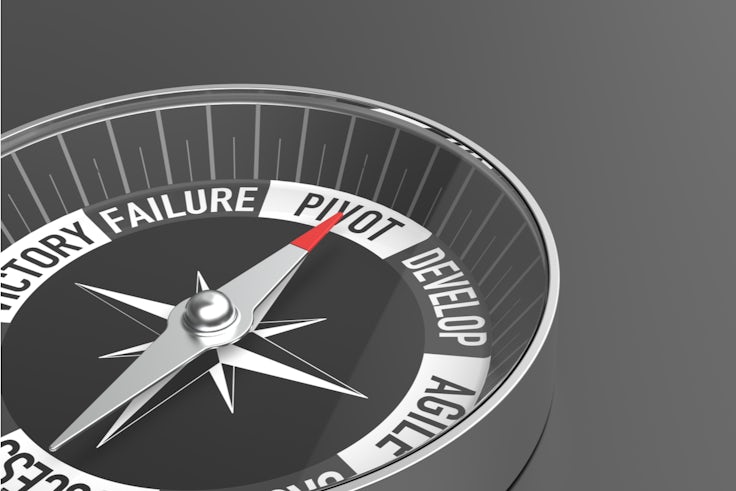Foresight is about actions, not just trends
Normality is an illusion – consumer behaviour is always in flux and the marketer’s challenge is to assess which trends are worth anticipating and acting on.
 We’ve all read articles proclaiming that nothing will be the same again, and also those that claim everything will return to normal. The truth is, of course, that the notion of things being normal or constant is always an illusion – even in years not as monumental as 2020. The forces shaping businesses and brands are always evolving to a greater or lesser extent.
We’ve all read articles proclaiming that nothing will be the same again, and also those that claim everything will return to normal. The truth is, of course, that the notion of things being normal or constant is always an illusion – even in years not as monumental as 2020. The forces shaping businesses and brands are always evolving to a greater or lesser extent.
It’s vital to recognise those forces and the external systems to which brands are connected, and there are many wonderful examples of harnessing these successfully in the recent and more distant past: Fuji, Nintendo, Netflix, IBM, Disney and – closer to home at Diageo – Guinness.
The invention of nitrogenated draught Guinness in 1959, exactly 200 years into the brand’s history, heralded a reinvention and the realignment of the brand to changing pub culture. These examples all show the importance of mindset in creating a more anticipative organisation.
Treat Covid-19 as your chance to ‘pivot’
At Diageo, we’ve really ramped up our foresight work in the last couple of years. There are always unpredictable forces that may come into play, but it’s helping us to make choices about the business we want to be and leading to exciting opportunities, such as in low and no alcohol – as evidenced by the nurturing and acquisition of Seedlip, the non-alcoholic spirit brand. Thinking to the future is also why we announced in July that we have created a 100% plastic-free, paper-based spirits bottle, which will debut with Johnnie Walker in early 2021.
So what have we learnt about looking to the future?
Think outside-in, not inside-out: A good marker of how well you are doing this is the extent to which everyday conversations focus on the external environment, competitors and customers, versus things going on inside the business. You also need to make it something everyone does – being externally attentive, curious and taking actions based on what you discover should be core leadership behaviours. At Diageo, in our leadership standard we talk about ‘shaping the future’.
Take the long view: Though we are a young company, many of our brands are centuries old, and by looking backwards it’s possible to see how the present was shaped and how the brands have been sustained over the years. This longitudinal view makes future scenarios and their implications easier to imagine – future thinking is part detective work, part history and part imagination.
Use simple frameworks: We use a straightforward approach to scan, frame and plan, using increasingly automated structured and unstructured data, alongside more qualitative insight, and expert opinion. We map the drivers that we uncover against their potential business impact, versus the level of certainty, challenging ourselves on things like status-quo bias or group-think, which can affect the work.
Make connections: The freshest thinking will come from cross-fertilising different perspectives and inputs. Draw together micro- and macro-level perspectives, and merge consumer and cultural trends with category forecasts and your understanding of economic, environmental, socio-cultural, political, technological and other relevant forces of change. An agnostic approach enables people to spot patterns, to connect ideas to their part of the business, and inspires bolder outcomes.
It’s important that this is an ongoing process – continuously making sense of the forces shaping consumer behaviour and the opportunities they present. We encourage our people to plan for different eventualities, considering what they would do differently in different scenarios.
Strive for sticky language: To create a common change agenda, it’s critical to make the drivers we uncover memorable and the action we should be taking against each one clear. It’s worth recognising that, while trends might be interesting for some, for most people it’s too time-consuming to draw the line from a trend to the behaviours consumers might adopt, and the opportunity and actions your business should take to harness them. Devote as much time to bringing to life the implications as you do the future opportunities.
Focus on uncertainty: At the moment, all businesses are thinking about the opportunities arising from accelerated digital living, such as ecommerce, but smart ones are also thinking beyond the obvious, as that’s where the sources of competitive advantage can be found. Think back to 2008, which created the conditions for category-redefining innovation – such as in financial services, with new fintech banking brands, cryptocurrencies, and payment systems like Square and Venmo. What will be the equivalents in the years ahead?
Behavioural economics can also be useful – to assess new consumer behaviours ask yourself how easy and satisfying they are, whether the contextual factors creating them are likely to remain in place, and whether the scale of adoption is likely to tip into a norm.
It should be self-evident, but foresight work is about taking actions to shape your future business, not about trends and better predictions. Judge the quality of your work on whether your business chose to act, not on whether your prediction turned out right. It needs to feel urgent and dynamic, not just a contingency plan.






